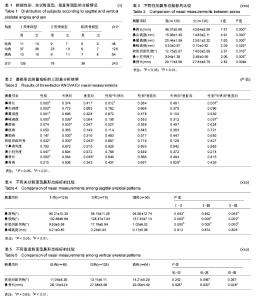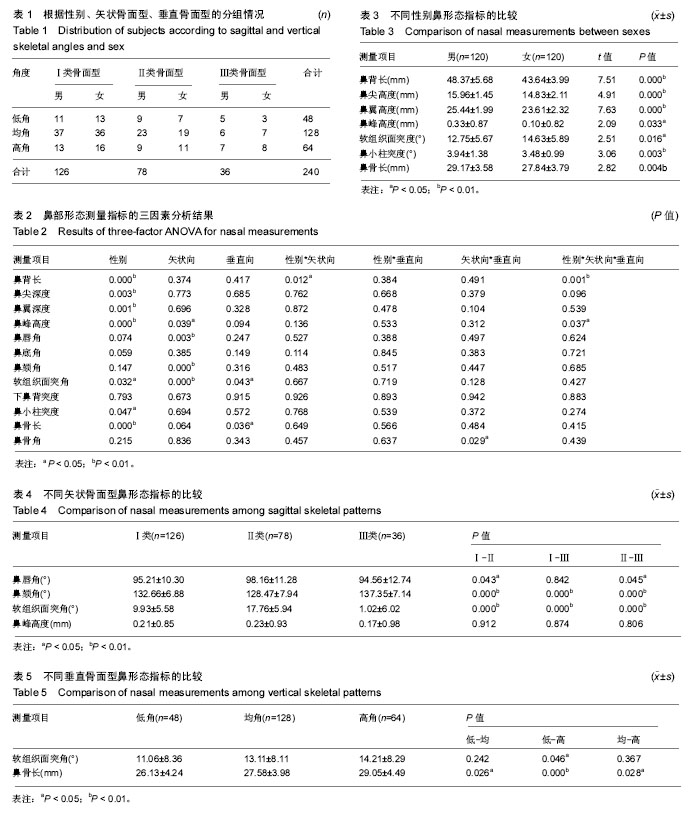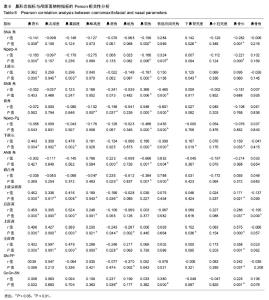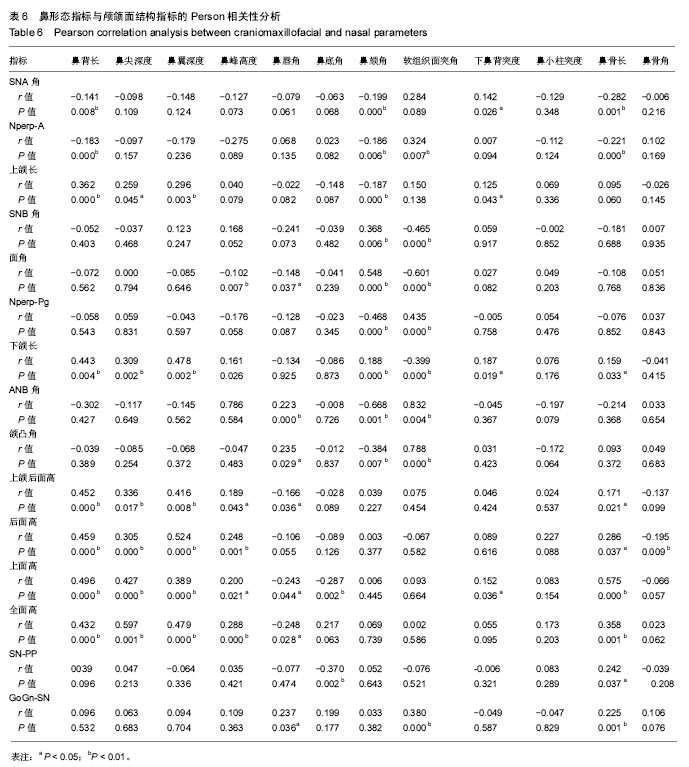| [1] 王兴,张震康.中国美貌人群颜面结构相互关系的三维测量分析[J]. 中华口腔医学杂志, 1991,26(2):67-69.[2] Motofumi Ohki MD, Kensei Naito MD, Philip Cole MD. Dimensions and resistances of the human nose: Racial differences. Laryngoscope. 1991;101(3):276-278.[3] Farkas LG, Katic MJ,Forrest CR.Comparison of craniofacial measurements of young adult African-American and North American white males and females.Ann Plast Surg. 2007;59(6):692-698.[4] Zhuang Z, Landsittel D, Benson S, et al.Facial Anthropometric Differences among Gender, Ethnicity, and Age Groups.Ann Occup Hyg. 2010;54(4):391-402.[5] He ZJ, Jian XC, Wu XS, et al. Anthropometric measurement and analysis of the external nasal soft tissue in 119 young Han Chinese adults.J Craniofac Surg. 2009;20(5):1347-1351.[6] Hwang TS, Kang HS. Morphometry of nasal bases and nostrils in koreans. Ann Anat. 2003;185(2):189-193.[7] Gulsen A, Okay C, Aslan BI, et al.The relationship between craniofacial structures and the nose in Anatolian Turkish adults: a cephalometric evaluation.Am J Orthod Dentofacial Orthop. 2006; 130(2):131.e15-25.[8] 李晓光,满大鹏,齐炜峰,等.成人AngleII类错牙合软硬组织颅面结构特征:计算机X射线头影测量[J].中国组织工程研究,2015,19(20):3173-3177.[9] Fernández‐Riveiro P, Smyth‐Chamosa E, Suárez‐Quintanilla D, et al. Angular photogrammetric analysis of the soft tissue facial profile. Eur J Orthod. 2003;25(4):393-399.[10] Begg RJ, Harkness M.A lateral cephalometric analysis of the adult nose.J Oral Maxillofac Surg. 1995;53(11):1268-1274.[11] Chen F,Chen Y,Yu Y,et al.Age and sex related measurement of craniofacial soft tissue thickness and nasal profile in the Chinese population.Forensic Sci Int. 2011;212(1–3):272.e1-272.e6.[12] 金俊夏.中国北方正常年轻成人的软组织侧貌角度分析[D].吉林大学, 2014.[13] 毛琴, 段余峰, 许雅芬,等.临界病例矫治拔牙与否与鼻、颏部形态的关系[J].中华口腔正畸学杂志,2016, 23(3):153-157.[14] Robison MC,Rinchuse DJ,Zullo TG.Relationship of skeletal pattern and nasal form.Am J Orthod. 1986;89(6):499-506.[15] 李红. 不同矢状骨面型成人鼻部形态的X线头影测量研究[D].山东大学, 2009.[16] 姚红英.成都地区12-14岁安氏Ⅱ~1类错(牙合)儿童鼻唇角的相关研究[D].四川大学, 2006[17] Nehra K,Sharma V.Nasal morphology as an indicator of vertical maxillary skeletal pattern.J Orthod. 2009 Sep;36(3):160-166[18] Arshad T,Shaikh A,Fida M.Comparison of nasal profiles in various skeletal patterns.J Ayub Med Coll Abbottabad.2013;25(1-2):31-35. |



